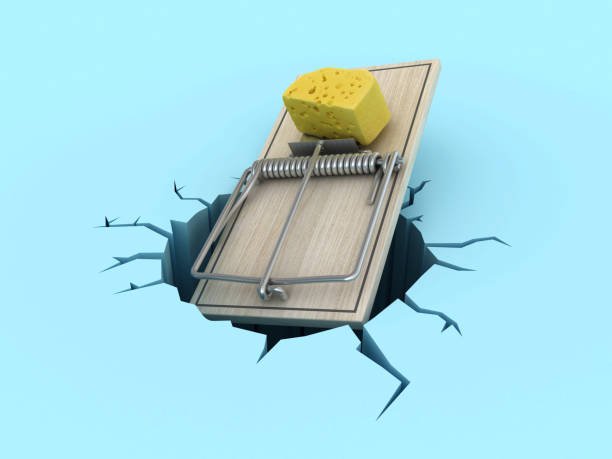
What Is a Trigger Rate—and Why Should You Care?
A trigger rate is the tipping point where your regular mortgage payments stop covering the principal of your loan and only cover the interest.
Let’s say your payment is fixed every month at ₹850. When interest rates were low, maybe ₹600 of that went toward your loan balance and only ₹250 to interest. But when rates rise—and your monthly payment doesn’t—the interest portion grows. If it grows enough, eventually your full payment only goes toward interest, and your loan balance isn’t shrinking at all.
That moment? That’s your trigger rate.
In simple terms: You’re treading water. You’re making payments, but you’re not getting any closer to owning your home.
Trigger Points: What Happens When You Go Too Far
Now here’s the scary part. If rates continue to rise past your trigger rate, your payments may no longer even cover the full amount of interest being charged. That’s when you reach your trigger point—and action becomes unavoidable.
At this point, your mortgage balance can start to grow instead of shrink. This is called negative amortization. And your lender will step in. You’ll likely receive a call or a formal notice from your bank requiring you to either:
- Increase your monthly payments
- Make a lump-sum payment to reduce the principal
- Refinance the mortgage to stretch out amortization and lower the pressure
Every lender handles this slightly differently, and some even have different loan-to-value (LTV) rules that determine your exact trigger point. But one thing’s certain—hitting that point means your mortgage is off track, and something needs to change.
How to Calculate Your Trigger Rate
Your specific trigger rate should be listed in your mortgage contract. But if you want to calculate a rough estimate yourself, here’s the formula lenders often use:
Trigger Rate = (Payment Amount × Number of Payments per Year ÷ Mortgage Balance) × 100
Let’s say:
- Your payment is ₹850 biweekly
- You make 26 payments per year
- Your remaining balance is ₹400,000
So, 850 × 26 = ₹22,100 in annual payments. Divide that by ₹400,000, and multiply by 100. That gives you 5.53%—your trigger rate.
If your interest rate rises above 5.53% and you keep making the same ₹850 payment, you’re no longer paying off any principal.
📉 How Trigger Rate & Trigger Point Affect Your Mortgage
For Canadians on variable-rate fixed-payment mortgages, two milestones matter most when rates rise: the trigger rate and the trigger point. Here’s how they change your monthly payments over time.
| Rate Milestone | What Happens | Impact on Payments |
|---|---|---|
| 📌 Initial Rate (e.g. 1.90%) | Regular amortization schedule | Stable monthly payments |
| ⚠️ Trigger Rate Reached | Monthly payment no longer covers all interest | Negative amortization begins |
| 🚨 Trigger Point Crossed | Mortgage balance exceeds original loan amount | Lender may force payment increase or lump sum |
Why Are More Canadians Hitting Their Trigger Rates Now?
Blame inflation—and the Bank of Canada’s response to it.
In an attempt to bring inflation back to its 2% target, the Bank of Canada has been aggressively raising its policy interest rate. Each increase prompts lenders to hike their prime rates, which directly affect variable-rate mortgages.
If you signed a variable-rate mortgage during the rock-bottom rate days of 2021 or early 2022, your payments were likely based on rates as low as 1.5% to 2.5%. Fast-forward to today, and many prime rates sit above 6.5%—sometimes even higher.
This means that thousands of Canadian homeowners with VRMs (Variable-Rate Mortgages) have already hit their trigger rates—or are dangerously close.
VRMs vs. ARMs: What’s the Difference Anyway?
Let’s clear up some common confusion. In Canada, there are two main types of floating-rate mortgages:
1. Variable-Rate Mortgages (VRMs):
Your payment stays the same, but the interest rate fluctuates. As interest rates rise, more of your payment goes to interest, and less to principal. This type can hit trigger rates and trigger points.
2. Adjustable-Rate Mortgages (ARMs):
Your payment changes whenever interest rates change. So, if the Bank of Canada raises rates, your monthly payment immediately goes up too. But since the principal portion stays consistent, you stay on amortization schedule—and trigger points aren’t an issue.
In short, ARMs give you stability in repayment timeline but not in monthly budget. VRMs give you stable payments—but only until rates rise so much that the math stops working.
Trigger Point Example: How It Happens in Real Life
Let’s go back to our earlier scenario. You bought a home in 2021 with a VRM of ₹400,000, a 25-year amortization, and an initial rate of 2.45%. Your biweekly payments were set at ₹850.
Back then, this payment comfortably paid off your mortgage. But now that your lender’s prime rate is at 6.94%, your interest alone exceeds that ₹850—meaning you’ve blown past your trigger rate and likely hit the trigger point.
Unless your lender automatically adjusts your payments or you step in to fix the imbalance, your mortgage could go into negative amortization.
How Rate Hikes Strain Your Monthly Budget
When your payment doesn’t increase, and your mortgage balance isn’t shrinking, it’s easy to feel stuck. On top of that, lenders might now require you to start paying more—or make a lump-sum payment—to keep your mortgage healthy.
This can quickly eat into your monthly cash flow. You might need to reallocate your spending, dip into emergency funds, or even consider selling assets.
If things get really tight, some homeowners may even consider downsizing or selling the property to get out from under the pressure. That’s why understanding your trigger rate early on—and having a plan—is so important.
How to Stay Ahead of Your Trigger Rate
Switch to a fixed rate
Locking in a fixed rate can bring peace of mind if you’re worried about further hikes. You’ll get a consistent payment for the rest of your term, which can help you budget better.
Make a lump-sum prepayment
Many lenders allow you to pay 10% to 20% of your original mortgage as a lump sum annually without penalty. Even smaller prepayments can help reduce the principal and keep your amortization on track.
Increase your regular payment
Even an extra ₹100 biweekly can make a difference in reducing the strain caused by higher interest.
Split your mortgage
If you have a collateral charge mortgage, you may be able to split it into components—some fixed, some variable—to reduce risk without triggering a full refinance or penalty.
Your options will depend on your lender and mortgage structure, so it’s worth speaking with your broker or bank rep before making a move.
🧠 5 Ways to Avoid Trigger Rate Stress
If you’re on a variable-rate mortgage, trigger rate stress can creep in fast. Use this smart flowchart-style checklist to protect your financial sanity when rates rise unexpectedly.
-
🔍 Monitor Your Rate Regularly:
Keep an eye on BoC announcements and your lender’s prime rate so you’re not caught off guard. -
📉 Prepay While You Can:
Even small lump sum payments reduce your balance and help you stay under the trigger. -
🧾 Check Your Amortization Drift:
If your payments aren’t covering interest, talk to your lender before things escalate. -
📈 Consider Switching to Fixed:
If rates are expected to rise further, locking in may reduce risk — even short term. -
🤝 Talk to Your Broker Early:
They can help you restructure your mortgage before you’re forced to reset at a higher rate.
Final Thoughts: Stay Calm, Stay Informed
The trigger rate is more than just a technical term—it’s something that could directly impact your budget, your loan balance, and even your financial security. If you’ve got a variable-rate mortgage in Canada right now, it’s worth reviewing your mortgage terms, checking your amortization schedule, and having a conversation with a professional.
Remember, every mortgage is different. What works for one homeowner might not work for another. But one thing is clear—being proactive is always better than being surprised.
Whether you need to refinance, make a prepayment, or just want help understanding your options, reach out to a mortgage expert. We’re here to help you navigate the ups and downs of the rate rollercoaster—without losing sleep.
Trigger Rates Are Back — Do You Know Yours?
If you have a variable-rate mortgage with fixed payments, rising interest rates could quietly push you past your trigger rate — and into payment shock. Learn what it means and how to protect yourself.
Understand Your Trigger Rate Today
Stuck with a Mortgage Decision?
Don’t stress — our team is here to help. Reach out for free, no-obligation guidance.
Contact the Experts



